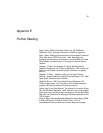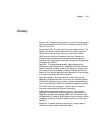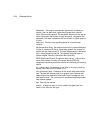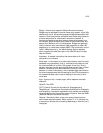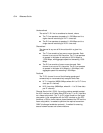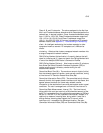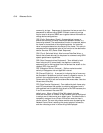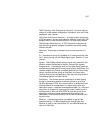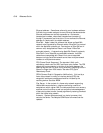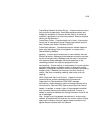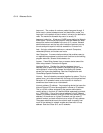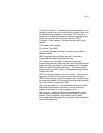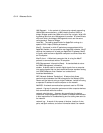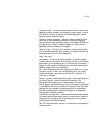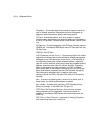GL-7
DHCP (Dynamic Host Configuration Protocol): A service that lets
clients on a LAN request configuration information, such as IP host
addresses, from a server.
DLCI (Data Link Control Identifier): A unique number assigned to
a PVC end point in a frame relay network. Identifies a particular PVC
endpoint within a user’s access channel in a frame relay network.
DNS (Domain Name Service): A TCP/IP protocol for discovering
and maintaining network resource information distributed among
different servers.
download: The process of transferring a file from a server to a
client.
E1: Transmission rate of 2.048 Mbps on E1 communications lines.
An E1 facility carries a 2.048 Mbps digital signal. See also
T1
and
channel
.
Egress: Frame Relay frames leaving a frame relay network in the
direction toward the destination device. Contrast with Ingress.
Encapsulation: A process by which an interface device places an
end devices protocol-specific frames inside a frame relay frame. The
network accepts only frames formatted specifically for frame relay;
hence, interface devices acting as interfaces to a frame relay
network must perform encapsulation. See also
Interface device
or
Frame-Relay-Capable Interface Device
.
End-Device: The ultimate source or destination of data flowing
through a frame relay network sometime referred to as a Data
Terminal Equipment (DTE). As a source device, it sends data to an
interface device for encapsulation in a frame relay frame. As a
destination device, it receives de-encapsulated data (i.e., the frame
relay frame is stripped off, leaving only the user’s data) from the
interface device. Also see DCE. NOTE: An end device can be an
application program or some operator-controlled device (e.g.,
workstation). In a LAN environment, the end device could be a file
server or host.
Ethernet: A networking protocol that defines a type of LAN
characterized by a 10 Mbps (megabits per second) data rate.
Ethernet is used in many mainframe, PC, and UNIX networks, as
well as for EtherTalk.



